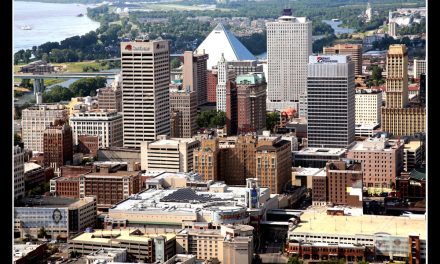The earlier Smart City Memphis post, June 12: Memphis and Musk
While our daily newspapers have practiced a weakened form of journalism in their reporting about the Musk supercomputer project, it’s been the niche online investigative publications that have given the best context for the questions that envelope the project.
In addition, there have been national and international industry and business publications that question the official narrative pushed forward by Musk in the mad rush to treat the project as something to embrace, no questions asked.
One newspaper has printed a series of articles based on single anonymous sourced information (although observers say clues to the person’s identity are easy to follow), an anomaly in journalism practice.
What’s left unknown to readers with these leaks is whether there is another point of view and why a newspaper treats a single source as infallible rather than treating him as pushing out his own spin.
Skeptical Journalism Needed
The normal journalistic skepticism was also missing when the head of MLGW presented a “fact sheet” to Memphis City Council that read like a sales piece for the supercomputer (it was hard to determine if he was working to sell Council members on the project or to sell the Tennessee Valley Authority which has not yet approved the project).
Normally, in the midst of controversial issues, newspapers work even more to challenge orthodoxy or a rush to judgement, even if it comes from an “official” source like MLGW.
The Daily Memphian wrote: “MLGW and CTC are negotiating the discounted procurement and early installation of more than 50MW of utility-scale battery storage in the MLGW system starting in 2024. The batteries, once installed, will be used by MLGW to ‘peak shave’ during periods of high energy consumption, and to provide dispatchable energy into MLGW’s system when demands on the grid are high.”
In response, Memphis journalist and consultant Susan Adler Thorp wrote on Facebook: “As I read it, MLGW will buy 50 megawatts of battery storage for about $25 million, or $1.1 million per 1.9 megawatts of power, from an xAI subsidiary owned by Elon Musk.. After providing xAI with its high demand for electricity, MLGW says these battery stored megawatts will give MLGW the additional power it will need to provide power to its ratepayers during peak seasons, since our power supply from TVA could be low/depleted because of xAI’s large consumption. Mr. Musk isn’t in business to lose money. Mr. Musk’s battery operation likely will make money off of MLGW so that TVA can sell power at a reduced industrial rate to xAI and, in turn, MLGW’s ratepayers will pay full price for power during peak months. One more thing. Notice that the battery packs only provide power for two hours. TVA/ MLGW customers will subsidize low-priced electricity for xAI at industrial rates, pay a premium for the batteries, and get minimal (if any) benefit.”
Get The Basics Right
Journalism 101: There are two sides to every story. Although it’s hard to see this principle in action in our newspapers on most days.
But the happy talk can’t just be blamed on newspapers. There’s been the unquestioning attitude by the mayor, the head of the Greater Memphis Chamber, and the head of Memphis Light Gas & Water Division. It’s been hard not to feel manipulated in the way the project’s announcement was handled, how many details were not provided, and how often the public’s interest and concerns were overlooked, if not discounted.
It’s hard to criticize the Chamber for its euphoria on landing a high-profile project – that’s its job – but it was likely unprepared for the public pushback and stream of questions triggered by its announcement. Many Memphians, especially those active on environmental issues, resented what appeared to be a lack of due diligence and consideration of their opinions by public officials before – and many times, after – the announcement was made.
It’s been a dichotomy that I wrote about June 12 and its depth has continued to grow in the subsequent six weeks.
Online Journalists Step Forward
Fortunately, our community has some fine news outlets outside of the mainstream and they have filled the gap left by daily newspapers, specifically MLK50 and Institute for Public Service Reporting.
At the latter, reporter Micaela Watts asked the seminal question: “Is Memphis moving too fast in its negotiations with Elon Musk?”
She writes:
“The question troubles environmentalists like Sarah Houston as Musk fast-tracks plans to open an energy-intensive xAI supercomputer here later this summer.
Data centers like this come with a lot of questions,’’ said Houston, executive director of the nonprofit group Protect Our Aquifer. Houston and others are concerned about xAI’s impact on Memphis’ resources.
The artificial intelligence plant already under development in southwest Memphis will require enough electricity to power 100,000 homes and consume up to 1.5 million gallons of water a day to cool equipment.
Negotiations between Musk, the Greater Memphis Chamber, and city-owned Memphis Light, Gas & Water have moved swiftly and behind closed doors since the tech billionaire and his team first approached local officials in March.
Supporters view xAI as a catalyst for Memphis to become a technology hub that could infuse hundreds of new jobs and millions of investment dollars into the local economy. That includes the potential for other Musk-owned businesses to set up shop here.
But a litany of questions has unfolded about xAI’s energy use and environmental impact since negotiations became public last month. In response, Musk’s swiftly evolving plans have incorporated measures to allay those concerns.
Among them is a plan to build a 150-megawatt substation to reduce the chance of any future power brownouts or blackouts. Talks also are underway to build a gray water facility that would use treated wastewater rather than precious drinking water to cool xAI’s equipment.
Still, critics say the discussions spearheaded by the chamber and MLGW are proceeding with too little public input.
Read more by Micaela Watts here.
At MLK50, Ashli Blow asked another seminal question: “Memphis leaders celebrate xAI, but will its ‘burden’ go unchecked? The Chamber of Commerce and local leadership have been silent on tradeoffs to neighboring communities and natural resource.”
She writes:
Over the last month, a supercomputer has been quietly set up near President’s Island, a gritty river port neighboring Boxtown, a historically Black community in Southwest Memphis.
The people who live in Boxtown found out about the gigafactory — a facility to house and power the supercomputer — with the rest of the world when the Memphis Chamber of Commerce made a “transformative” announcement” on June 5. Called xAI, it’s a project of Elon Musk, the CEO of Tesla and SpaceX.
xAI is the latest industry that’s come to the area with little government oversight. The chamber and Memphis, Gas, Light, and Water Division leadership signed a non-disclosure agreement, citing privacy of economic development.
Because MGLW is a public-owned utility, advocates believe the public should have had a say. Instead, Southwest Memphis residents — and MLGW customers throughout the region — were left in the dark and without a voice in the sustainability of their natural resources.
What is xAI doing in Memphis?
xAI, a startup led by Elon Musk, CEO of Tesla and SpaceX, is building a powerful data center and supercomputer in a Memphis warehouse to power artificial intelligence products, such as Grok. Grok is an emerging chat AI currently being developed and tested on the social platform X. Musk is working on an accelerated timeline to catch up with other companies developing similar technologies.
xAI has drawn 30,000 gallons from the Memphis Sand Aquifer, the region’s drinking water supply, every day since beginning its initial operations, according to MLGW.
Of the utility’s 10 wellfields, the one in Southwest Memphis is the closest to the arsenic-contaminated groundwater near a closed coal-fired plant on the industrial island.
Environmental and justice advocates worry that another heavy water user would spread the toxin deeper into the groundwater. In addition to aquifer vulnerability, advocates and customers worry about the resiliency of the electrical grid after rolling blackouts and boil water advisories over the last few years.
Read more of Ashli Blow’s reporting here.
Outside of Memphis, business and industry publications raised their own questions about the supercomputer project. For example, Britain’s DCD newsletter questions if Musk’s announcement that the supercomputer is live is accurate and if training has really started as he said.
Despite Musk’s posts, it’s not clear how much of the cluster is online. SemiAnalysis estimates that the company has around 32,000 GPUs currently, with the rest slated to go online by Q4.
The company has only 8MW of power available from the power grid, while agreements xAI has brokered with utility companies such as Tennessee Valley Authority won’t be signed until next month, but could add 50MW. The company is believed to be using gas power with Quantum Fuel Systems generators.
It’s also unlikely the cluster has started training already as the debugging and optimization process would take some time.
Read more here.
Also, Bloomberg’s highly regarded CityLab newsletter tackled the Musk supercomputer project and community concerns. It wrote:
“ In Memphis, an AI Supercomputer From Elon Musk Stirs Hope and Concern. The billionaire’s artificial intelligence company is moving quickly to build one of the world’s largest computers in South Memphis. But many locals are wary of its benefits.”
Read it here.
**
Join me at the Smart City Memphis Facebook page and on Instagram where these blog posts are published along with occasional articles, reports, and commentaries that are relevant to Memphis.







Thank you and the other reporters/commentators for this. Investigative journalism is so very important.
Can we sue the current president of MLGW, a Republican, for signing an NDA which can have an enormous negative impact on the rest of us? Seems like a reasonable and responsible first step.
An even greater concern is that many of the issues and comments raised by the articles noted above are not xAI specific. I had no idea so much of our city was barely hanging on from a utility/infrastructure standpoint. It appears that additional use of the aquifer above and beyond the city’s current draw (be it for a supercomputer, residential uses or even the most community based, upward mobility inspired employer) will create undue risk for contamination of the city’s water supply. Given the risk expressed by the UofM and POA and said risk now being widely known, this appears to essentially disqualify new water demand within the Davis Wellfield pending detailed reviews and studies via the UofM and/or Protect our Aquifer. Also, the articles draw attention the electric grid’s lack of reliability which includes weekly failures in some nearby neighborhoods. The ability for MLGW to support new electric demand seems to hinge on first addressing the extensive, decade long list of deferred maintenance, upgrades and reliability related projects
To any would-be investor, these are serious red flags. That sanitary sewer demand exceeds capacity for large areas of the city is bad enough. The addition of water supply constraints and electricity capacity/reliability issues raises serious questions regarding the ability for the city (or MLGW service area at large) to support new investment of any significance and type for the foreseeable future which would echo Oracle’s conclusion as stated in Blow’s article.